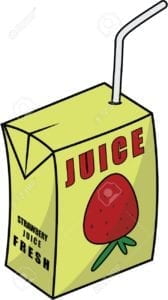Jonathan Lethem’s “The Ecstasy of Influence” mainly focuses around the nature of plagiarism. Although I understand that in an academic setting, plagiarism is definitely unacceptable due to the strict rules provided by schools, there’s a very fine line between plagiarism and inspiration when it comes to the real world art. It is hard to be able to use a sample of someone’s work as an inspiration without being labelled as plagiarist or untalented. This is what the author talks about too, but it is important to realize that this fine, blurry line makes it hard to pinpoint when it is being crossed, and when the work is actually being plagiarised in the name of “inspiration”. There needs to be a few hard and fast rules that define plagiarism more than just stealing other’s work and ideas.
Response to Homecoming – Manal Masood
Homecoming Ep 1 was my first ever experience with podcasts, so I didn’t know what expectations to have. However, I didn’t expect podcasts to be this immersive. Even though there was no video, I could really imagine everything that was going on and felt like I was a present in the story. The sounds used in the podcast are what helped set the mood. We could tell the scene was changed just by the change in sounds which indicated the change in environment. After a while, it also became easy to tell when the scenes were changing by just listening to the sounds. Although, stories told through videos would be more easier to understand, I feel that this podcast did a great job taking us through the story as coherently as it could.
Interactive comic project – Manal Masood
http://imanas.shanghai.nyu.edu/~mma581/comic%20project/index.html
Idea:
My idea was to do something related to animals. I thought it would be nice if I could add animals and a bit of humour in it as well.
Photoshop:
I used photoshop to edit some pictures together, for instance I had to edit the hamster in different settings which accomplished that using photoshop.
Coding:
This part was definitely the most challenging and took a lot of time and effort to understand although I expected it to be harder. My main problem was with javascript when I couldn’t get my pictures to cycle once I clicked next. However, with trial and error I was able to get the hang of it and it worked out at the end.
Pictures:
pictures were taken from the web:
https://dribbble.com/shots/3637649-Hamster-Girl
https://www.walmart.ca/fr/ip/cage-habitrail-retreat-pour-hamsters/6000189078778
https://www.blesserhouse.com/living-room-update-ceiling-fan-swap/
https://en.wikipedia.org/wiki/Tom_and_Jerry
https://www.mouthshut.com/review/Samsung-RT37K3753S8-Frost-Free-Double-Door-Refrigerator-review-tuorpmluoqn
Photoshop Exercise – Manal Masood

For my photoshop collage, I decided to add a little bit of humour to it. I chose a picture of a monkey drinking juice on a slide in the playground. It was an easy process, I cut out the pictures and posted them on the background picture. It took me a while to get the hang of it but eventually I got it done. Overall, I think everything happened smoothly and I didnt have any major issues, although it took me a while to make the juice picture the right size to fit in the monkey's hand.
This experience was really fun as expected, and I'm glad I got to learn the basics of photoshop so I can keep using it in the future.



Response to Understanding Comics – Manal Masood
Before reading “Understanding Comics”, I had never even touched a comic book before. I’m afraid to admit that I did give in to the stereotypes which are mentioned in the beginning of the book. However, after reading this graphic novel, I now understand the complexity of comics and finally realize why so many people are invest so much time and energy into them.
Comics in this novel are described as “juxtaposed pictorial; and other images in deliberate sequence”. It’s really interesting how readings comics sort of like a two way street, the author gets to decide whatever form of style, line work, etc he wants to use and then it is all up to the reader to fill in those gaps. One thing that might seem small but really intrigued me was the idea of “gutter” and closure. Closure is what allows the reader to connect the events occuring in each panel, which eventually forms a story. This closure is what helps continue the story even when there’s a “gutter” between the panel. Another thing that caught my attention was the fact why most authors tend to keep their comics simple, and the reason for that is the universality. The idea of immersing yourself in the book and engaging all your senses while reading it is truly amazing.